The Importance of Professional Website Design in Today’s World
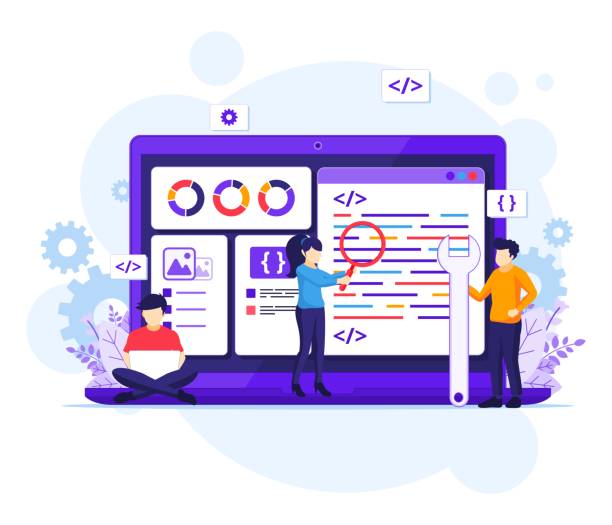
In the current era, where the digital world has cast its shadow over all aspects of our lives, having a strong online presence for any business, from the smallest startups to the largest corporations, is no longer an option but a vital necessity.
This presence primarily begins with professional website design.
A website is not only the virtual storefront of your business but also a platform for interacting with customers, providing services, selling products, and creating a sustainable brand identity.
Users’ first impression of your business is often formed through your website, and a weak or outdated website can quickly erode trust.
A professional website reflects your quality and business credibility.
If your website is slow, confusing, or visually unappealing, potential customers will quickly leave and go to your competitors.
In contrast, a meticulously designed website that considers user needs can convert visitors into loyal customers.
This is especially important in digital marketing, where the website acts as the central hub for all online activities.
Therefore, investing in professional website design is not merely an expense but a strategic investment for the long-term growth and success of your business in today’s competitive landscape.
This includes various aspects such as User Interface (UI) and User Experience (UX) design, as well as Search Engine Optimization (SEO), all of which collectively form a powerful and effective website.
#Website #Digital #OnlinePresence #Branding
Does your company’s website create a professional and lasting first impression in the minds of potential customers? Rasaweb, with its professional corporate website design, not only represents your brand’s credibility but also paves the way for your business growth.
✅ Create a powerful and reliable brand image
✅ Attract target customers and increase sales
⚡ Get free consultation
Essential Steps for Professional Website Design from Idea to Implementation

The process of professional website design is a step-by-step journey that begins with meticulous planning and culminates in site launch and maintenance.
The first step is needs analysis and goal setting.
Before anything else, you must know what your website is intended to do? Is it for selling products, offering services, a blog, or a combination of these? Understanding your target audience and determining the necessary content are also crucial at this stage.
Following that, the stage of site structure planning or Wireframing and initial design begins.
Wireframing helps you define the overall site map, the placement of various elements, and the user’s flow.
The next step is visual design, which includes selecting colors, fonts, images, and graphic elements that reflect your brand’s visual identity.
At this stage, the focus is on visual appeal and user-friendliness.
After design approval, it’s time for development and coding.
This involves writing HTML, CSS, and JavaScript codes to transform the graphic design into an interactive and dynamic website.
At this stage, implementing various functionalities, connecting to databases, and ensuring the website is responsive for correct display on various devices (mobile, tablet, desktop) are very important.
Professional website development must be done carefully and in compliance with coding standards.
Finally, after development is complete, the website enters the testing phase.
At this stage, the functionality of all sections, links, forms, and compatibility with various browsers are checked to ensure no errors exist.
After bug fixes, the website is hosted on a server, and the domain is connected to it to be publicly accessible.
Even after launch, regular maintenance and updates are essential to maintain the site’s security and optimal performance.
These steps ensure that the final product is a functional, attractive website that aligns with your goals.
UI/UX Design Principles for Successful Websites

In the process of professional website design, two concepts, UI (User Interface) and UX (User Experience), are of particular importance and are considered complementary to each other.
UI refers to the appearance and visual elements of a website such as buttons, menus, colors, and fonts.
Its goal is to create a beautiful, attractive, and visual appearance that draws users in.
In contrast, UX deals with how the user interacts with the website and their feeling while using it.
UX focuses on ease of use, efficiency, accessibility, and the pleasantness of the experience.
An excellent UI design without strong UX is meaningless, as beauty without functionality frustrates users.
Key principles of UI/UX design include several points.
Clarity and simplicity in site navigation, making key information accessible, and reducing the steps required to perform an action (e.g., purchasing or filling out a form) are among the most important.
Also, visual feedback for user actions (such as button color change after clicking) and providing appropriate feedback during wait times are important points.
Responsive Design is also vital; meaning the site should display correctly and with the best experience on any screen size (mobile, tablet, desktop).
Adhering to visual hierarchy, using appropriate white space, and legible typography also significantly contribute to improving the user experience.
The ultimate goal of professional website design with a UI/UX approach is to create a seamless and enjoyable experience for the user, encouraging them to return and interact more with the website.
In the table below, key differences and important elements in UI and UX design are presented:
| Feature | UI (User Interface) | UX (User Experience) |
|---|---|---|
| Main Focus | Aesthetics, appearance, graphics, color, font | Functionality, ease of use, user satisfaction, user journey |
| Key Elements | Buttons, icons, images, layout | Information architecture, navigation, interaction, user research |
| Ultimate Goal | Visual appeal, visual interaction | User satisfaction, efficiency, solving user problems |
Choosing the Right Platform for Your Website Design
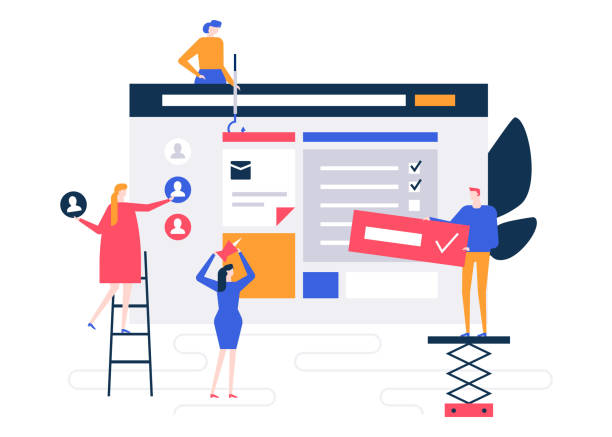
One of the key decisions in the professional website design process is choosing the right platform.
This choice not only affects the cost and time of development but also impacts the future capabilities of the website, ease of management, and its scalability.
There are numerous options for building a website, each with its own advantages and disadvantages.
The most common platforms include Content Management Systems (CMS) like WordPress, Joomla, and Drupal, Website Builders like Wix or Squarespace, and custom coding.
WordPress is the most popular CMS in the world due to its ease of use, high flexibility, and abundance of plugins and themes, making it suitable for all types of websites, from personal blogs to large online stores.
Joomla and Drupal are also powerful options, but they might be slightly more complex for non-technical users and are typically used for larger projects with more specific needs.
Using site builders is a quick and inexpensive option suitable for small businesses or individuals who need a simple website with minimal customization; however, they generally offer less flexibility and might impose limitations in the long run.
Ultimately, custom coding offers the most flexibility and control but requires high technical expertise and a larger budget.
This option is ideal for projects with unique and complex needs that no ready-made platform can fulfill.
When choosing a platform, factors such as budget, technical skills, specific business needs, scalability requirements, and future capabilities should be considered.
Consulting with a professional website design expert can help you make the best decision for your project.
Tired of losing customers due to poor e-commerce website design? With Rasaweb, solve this problem permanently!
✅ Increase sales and visitor-to-customer conversion rates
✅ Smooth and attractive user experience for your customers⚡ Get free consultation
SEO and Website Optimization for Search Engines

After the website design is complete, the most important step to ensure its visibility is optimizing it for search engines, or SEO (Search Engine Optimization).
SEO is a process that helps your website achieve a higher rank in search results for keywords relevant to your business, thereby attracting more organic traffic.
Without proper SEO, even the best and most professional website design might get lost among millions of other sites and be difficult for users to find.
SEO is a complex and continuous process that includes technical, content, and off-page aspects.
On-Page SEO involves the correct use of keywords in page titles, meta tags, meta descriptions, and throughout the main content.
Also, ensuring high website loading speed, responsiveness (mobile compatibility), and a search engine-friendly URL structure are crucial.
Using optimized images and optimizing HTML codes for better readability by search bots are also important parts of on-page SEO.
On the other hand, Off-Page SEO primarily deals with your website’s credibility and authority on the internet, mainly achieved through building high-quality links from other sites (Backlinks) and social media activity.
Natural and high-quality link building indicates the credibility of your content.
High-quality and unique content also plays a pivotal role in SEO.
Search engines prefer content that addresses user needs and provides real value.
Regular content updates, using an appropriate structure (headings, paragraphs, lists), and avoiding duplicate content are other important points.
Also, using an SSL certificate (HTTPS) for website security and adhering to Google’s webmaster guidelines are influential factors in ranking.
Given the increasing competition in the online space, investing in SEO and its proper implementation will guarantee the long-term success of a professional website.
Content is King: The Role of Engaging Content on a Website
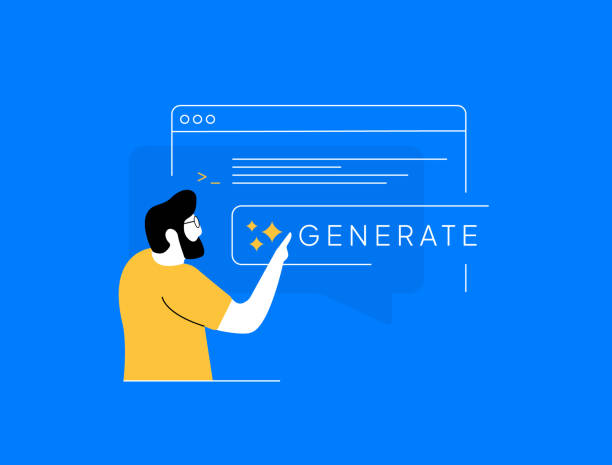
The famous phrase Content is King
holds true more than ever in today’s world, especially when it comes to professional website design.
Without engaging, useful, and relevant content, even the best visual design and most advanced technologies cannot retain users.
Content is the element that draws users to your website, engages them, and ultimately converts them into customers.
Have you ever wondered what convinces a visitor to stay longer on your site or return to it? The answer often lies in the quality and relevance of your content.
Engaging content not only includes text but also high-quality images, tutorial videos, infographics, podcasts, and even photo galleries.
Variety in content delivery ensures that users with different preferences have a better experience.
Your content should answer users’ questions, solve their problems, and provide valuable information.
For example, a blog related to your business area can be a rich source of information that builds user trust and positions you as an authority in your industry.
Product or service descriptive content should also be clear, comprehensive, and convincing, highlighting the product’s benefits.
Question-provoking and interactive content can also be highly effective; surveys, quizzes, and FAQ sections can encourage users to participate more.
Furthermore, a clear and engaging Call to Action guides users to take the next step, whether it’s purchasing a product, signing up for a newsletter, or contacting you.
Finally, regular content updates are not only vital for SEO but also show that your website is active and dynamic.
Investing in quality content creation and strategic planning for it is an essential complement to any professional website design and breathes life into it.
Website Security and Post-Launch Maintenance

Once the professional website design process is complete and your site is launched, the work is by no means finished.
In fact, website maintenance and security are vital and ongoing aspects essential for preserving performance, reliability, and protecting your users’ and business’s information.
This part of the work is often overlooked but can have irreparable consequences.
Cyberattacks, hacker intrusions, and data loss are just some of the threats an inadequately protected website faces.
Therefore, consistent attention to security and regular maintenance is an integral part of professional website management.
One of the first measures to enhance security is installing an SSL certificate (HTTPS), which encrypts the communication between the user’s browser and the website server and increases user trust.
Regular updates of the platform (CMS), themes, and plugins are also very important, as older versions often have known security vulnerabilities that hackers exploit.
Using strong and unique passwords, enabling two-factor authentication (2FA) for admin panel access, and installing a Web Application Firewall (WAF) can strengthen your site’s defense layers.
Additionally, regular backups of all website files and databases ensure that you can quickly restore your site in case of any issues and prevent data loss.
Maintenance includes monitoring site performance, checking for broken links, optimizing loading speed, and analyzing traffic through tools like Google Analytics.
These analyses help you understand user behavior and improve your website based on their needs.
Continuous monitoring of server logs to identify suspicious activities is also of high importance.
In summary, security and maintenance are indispensable parts of the lifecycle of any professional website, and neglecting them can lead to serious financial and reputational damages.
In the table below, some common security threats and their prevention methods are listed:
| Common Security Threat | Prevention Method |
|---|---|
| Malware Attacks | Install malware scanner, regular updates, use firewall |
| SQL Injection Attacks | Use Prepared Statements, validate inputs |
| XSS (Cross-Site Scripting) Attacks | Filter and validate user inputs, use HTTP-only flags |
| Weak Passwords | Enforce strong passwords, two-factor authentication (2FA) |
| DDoS Attacks | Use DDoS protection services, network firewall |
Common Mistakes in Website Design and How to Avoid Them

While professional website design can ensure a business’s success, there are also common mistakes that can harm your efforts and lead to the loss of users and customers.
Understanding these mistakes and knowing how to avoid them is as important as knowing the principles of correct design.
One of the biggest mistakes is ignoring User Experience (UX).
A website that looks beautiful but is difficult to use quickly frustrates users.
Complex navigation, small and unclear buttons, and disorganized information are among the factors that weaken UX.
The solution is to always put yourself in the user’s shoes and simplify and rationalize their interaction path.
Another common mistake is slow website loading speed.
Today’s users are impatient and expect pages to load in less than a few seconds.
Unoptimized images, heavy coding, and inadequate servers can severely reduce site speed.
To fix this, you should compress images, optimize CSS and JavaScript codes, and use a high-quality hosting service.
Lack of Responsiveness (Non-Responsive Design) is also a major error, especially given that a large portion of internet traffic today comes from mobile devices.
Your website should display well on all devices, regardless of screen size.
Ignoring Search Engine Optimization (SEO) is also a costly mistake.
Without SEO, even the best content will not be seen.
Furthermore, the absence of a clear Call to Action or the design of complex forms that deter users from completing the process can eliminate sales opportunities and customer engagement.
Finally, lack of regular website updates and maintenance not only compromises its security but can also lead to errors and negative user experiences.
By avoiding these common mistakes and focusing on the fundamental principles of website design and development, you can ensure that your website will be a valuable asset for your business.
Does your current website convert visitors into customers or drive them away? Solve this problem forever with professional corporate website design by Rasaweb!
✅ Build strong credibility and branding
✅ Attract target customers and increase sales
⚡ Get a free consultation now!
The Future of Website Design: New Trends and Emerging Technologies
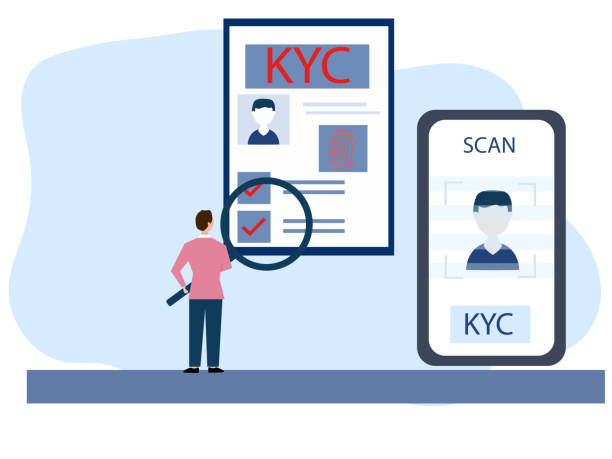
The world of website design is constantly evolving, and every year we witness the emergence of new trends and nascent technologies that are changing how we interact with the online space.
Familiarity with these trends is crucial for anyone involved in professional website design or planning to launch a successful website.
One of the most important future trends is the role of Artificial Intelligence (AI) and machine learning in personalizing user experience.
AI can suggest content based on past user behavior, improve chatbot interactions, and even optimize site design based on individual preferences.
Another trend is Voice Search, which has gained increasing importance with the proliferation of smart home devices and voice assistants like Siri and Google Assistant.
Websites need to be optimized to respond to voice queries, which usually means focusing on longer, more natural-sounding keywords.
Progressive Web Apps (PWAs) are also gaining increasing popularity.
PWAs are websites that can offer a user experience similar to a native application, including offline capabilities, sending notifications, and faster access.
This technology creates a bridge between websites and mobile applications.
Furthermore, Dark Mode, Micro-Animations to enhance small interactions, and increased use of 3D images and Virtual Reality (VR) to create more immersive experiences are other noticeable trends in the future of the web.
Cybersecurity will also continue to be a top priority, increasing the need for blockchain technologies and more advanced security solutions.
Finally, the focus on sustainability and energy consumption optimization in web design is also increasing due to growing environmental concerns.
All these factors indicate that website design is moving towards more personalized, faster, and more secure experiences.
How to Choose a Professional Website Designer
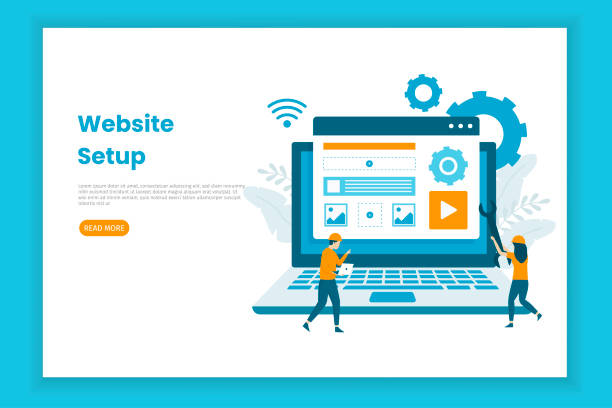
Choosing a professional website designer or team is one of the most critical decisions that can determine the success or failure of your online project.
Given the wide variety of specialists and agencies in this field, finding an option that matches your needs and offers high-quality work can be challenging.
The first step is to precisely define your needs and goals.
Before searching, you should know what type of website you want, what your budget is, and what timeline you have for project completion.
This information helps you filter out unsuitable options.
After that, look for their portfolio and experience in similar projects.
A professional designer should have a strong and diverse portfolio that demonstrates their ability to design websites with excellent UI/UX, responsiveness, and proper functionality.
Ask them to show projects similar to what you have in mind.
Also, check their previous client reviews and market reputation.
A reliable designer will maintain transparency in pricing and work stages and will sign a written contract with you.
Communication skills are also very important.
You should be able to easily communicate with the designer or their team and clearly express your ideas and feedback.
A good designer not only listens to you but also asks challenging questions and offers innovative solutions.
Also, ask the designer if they offer post-launch services such as training, support, and maintenance.
Ongoing support is crucial to ensure the optimal performance and security of your website in the long term.
By considering these criteria, you can make the best decision for your professional website design and ensure a successful outcome.
Frequently Asked Questions
| Question | Answer |
|---|---|
| What does professional website design mean? | Professional website design refers to creating a user-friendly, visually appealing, fast, secure, and search engine-optimized website that fulfills business objectives. |
| What are the most important features of a professional website? | Responsiveness, high speed, security, SEO-friendliness, excellent User Experience (UX) and User Interface (UI), quality content, and strong branding. |
| Why is responsive design vital for a professional website? | Responsive design ensures that your website displays correctly on any device (computer, tablet, mobile), which is crucial for user experience and Google ranking. |
| What is the role of UI and UX in professional website design? | UX (User Experience) focuses on ease of use and user satisfaction, while UI (User Interface) deals with the visual appearance and user interaction with the website. Both are essential for attracting and retaining the audience. |
| What is the place of SEO in professional website design? | SEO is one of the main pillars. A professional website must have a strong technical structure, optimized content, and high speed to achieve a good ranking in search engine results and be visible. |
| What tools or platforms can be used for professional website design? | Content management platforms like WordPress, Joomla, or Drupal, web development frameworks like React, Angular, or Vue.js, and graphic design tools like Figma or Adobe XD. |
| What are the main stages of designing a professional website? | Planning and research, wireframing and mockup design, development and coding, content entry, testing and review, and finally launch and maintenance. |
| What is the importance of security in a professional website? | Website security is crucial for protecting user data and business credibility. Using SSL/TLS, firewalls, regular backups, and updates are vital measures. |
| Does a professional website need maintenance after launch? | Yes, regular maintenance including software updates, checking for broken links, performance monitoring, backups, and adding fresh content is essential to maintain the website’s functionality and ranking. |
| What distinguishes a professional website from an amateur one? | A professional website focuses on business objectives, provides an exceptional user experience, adheres to high technical standards, and is continuously optimized for improvement, whereas an amateur website typically lacks these features. |
And other advertising services of Rasa Web Advertising Agency
Smart Custom Software: Designed for businesses seeking to increase click-through rates through SEO-driven content strategy.
Smart Sales Automation: An effective tool for increasing sales through user experience personalization.
Smart UI/UX: A combination of creativity and technology to increase site visits through Google Ads management.
Smart Conversion Rate Optimization: A specialized service for customer acquisition growth based on precise audience targeting.
Smart Link Building: A professional solution for digital branding with a focus on precise audience targeting.
And over hundreds of other services in the field of internet advertising, advertising consulting, and organizational solutions
Internet Advertising | Advertising Strategy | Advertorial
Sources
Important tips in website designProfessional Web Design GuideWebsite Design for Digital BusinessesWeb Design for Modern Businesses
? Do you want your business to shine in the digital world and achieve maximum visibility? Rasaweb Afarin, a leading digital marketing agency specializing in providing comprehensive and results-oriented solutions, including SEO-optimized website design, helps you establish a powerful and influential online presence. With us, your digital goals are not just dreams; they are tangible realities.
📍 Tehran, Mirdamad Street, next to Bank Markazi, Southern Kazeroon Alley, Ramin Alley, No. 6




